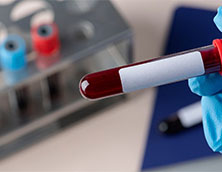Quality first, and provide customers with satisfying products and service
Quality first, and provide customers with satisfying products and service
Views: 0 Author: Site Editor Publish Time: 2021-07-13 Origin: Site









Flow cytometry is a powerful technique to describe the immune response of vaccines, immunotherapeutic drugs, and other clinical interventions. However, many preclinical and clinical studies may take place in different locations from the flow cytometry laboratory. This is why it is crucial to determine how clinical specimens should be collected, processed, stored, and transported to ensure that cells are viable and abundant enough for flow cytometry analysis.
Consider these factors when coordinating logistics for your next flow cytometry experiment.
1. Blood Sample Tubes: there are many kinds of Blood Collection Tubes, choose the appropriate one according to your purpose. The SST tube contains a gel separator for separating serum from blood cells, and there are many different test tube types, which contain different anticoagulants, such as sodium citrate or EDTA. Gel Clot Activator Tube is specially used to separate mononuclear cells from whole blood. It is used for the collection and storage of blood samples in biochemical, immune, serum, and other clinical medical tests. Plain Serum Tube, after special treatment, the inner wall is extremely smooth, which can effectively prevent blood cells from adhering to the wall and minimize hemolysis in vitro. You need to determine which tube is most suitable for the study you plan to.
2. Shipping and storage conditions: the type of cell and the distance to the flow cytometry laboratory determine the type of shipping conditions you will use. Most lymphocytes can be isolated from whole blood and can be transported and stored as frozen samples, but some cell types, such as dendritic cells, will lose their vitality during freezing and can only be transported and stored at low temperatures. You need to assess the viability of the cells you're interested in under different storage and transportation conditions to determine which method provides the most vitality.
3.Staining stability: Some cell samples can be stained as fresh samples and then transported for flow cytometry analysis, but the stability of staining and the ability to transport pre-stained samples for analysis is determined by the staining plate and fluorescent dyes. Once you dye the cells, you have to know how long the cells with fluorescent dye will stay in the state you want. Over time, cells die, antibodies internalize in warm temperatures, fluorescent dyes turn white in the light, and eventually, microbes grow everywhere.
4.Flow cytometry test point: if you are using a single location flow cytometry laboratory, you may limit the distance of transporting samples to ensure viability.
These factors will help to guide the decision-making framework of preclinical or clinical research.
Address : Rm 1212, Block E Wan Da Plaza, No. 129 Fuyuan Street, Jianye District, Nanjing, Jiangsu, China
Email: Jason@nj-superfit.com
Tell: 0086(25) 84581516
Mobile: +86-13701467765
OMZR株式会社 代表取締役 張 雪(チョウ セツ)
福岡県福岡市中央区清川2丁目2-18-205号室
電話070-8909-6814(日本) 0086-186-5186-1218(中国) E-mail:ZHANGXUE5460@163.COM
日本全国の顧客様に、購買・販売および輸出入代理業務を承ります。